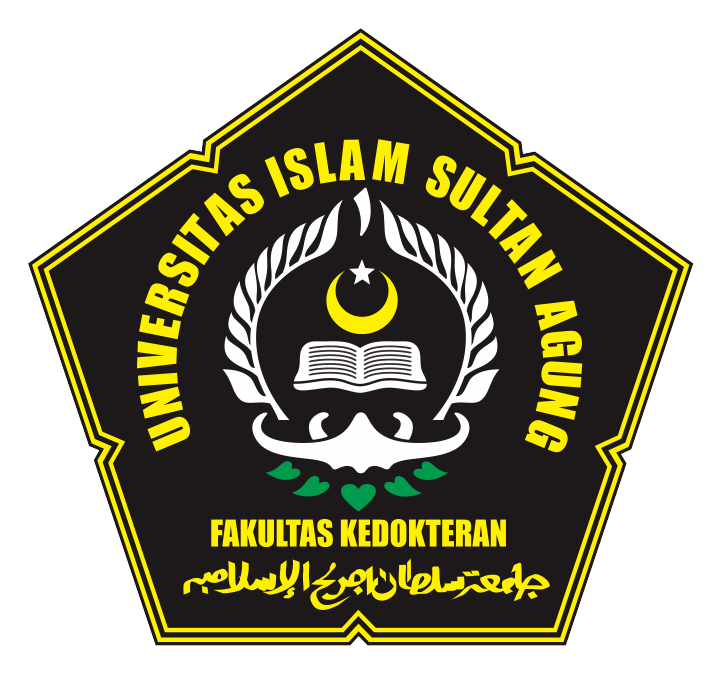Department of Microbiology, Facult y of Medicine, Sultan Agung Islamic University of Semarang - Indonesia
Obesity as a Risk Factor for Surgical Site Infection After Transperitoneal Cesarean Section
OBESITY AS A RISK FACTOR FOR SURGICAL SITE INFECTION AFTER TRANSPERITONEAL CESAREAN SECTION
Surgical site infection (SSI) is one of the main complications that can increase morbidity and mortality in obese women after cesarean section. Surgical site infection can be caused by endogenous or exogenous factors. This was a case of a woman, G4P3A0, 32 years, after trans-peritoneal cesarean section for indications of breech presentation; primary uterine inertia; premature rupture + 22 hours with BMI = 30.80 kg/m2. This case report discusses how obesity causes surgical site infection and its management.
Keywords: Obesity; surgical site infection
- de Araújo Madeira, M. Z. et al. (2014) ‘Surgical site infections in women and their association with clinical conditions’, Revista da Sociedade Brasileira de Medicina Tropical, 47(4), pp. 457–461. doi: 10.1590/0037-8682-0125-2014.
- De, D. et al. (2013) ‘Risk Factor Analysis and Microbial Etiology of Surgical Site Infections following Lower Segment Caesarean Section’, 2013.
- Guo, S. and DiPietro, L. A. (2010) ‘Critical review in oral biology & medicine: Factors affecting wound healing’, Journal of Dental Research, 89(3), pp. 219–229. doi: 10.1177/0022034509359125.
- Kawakita, T. and Landy, H. J. (2017) ‘Surgical site infections after cesarean delivery: epidemiology, prevention and treatment’, Maternal Health, Neonatology and Perinatology. Maternal Health, Neonatology and Perinatology, 3(1), p. 12. doi: 10.1186/s40748-017-0051-3.
- Lamont, R. F. et al. (2011) ‘Current debate on the use of antibiotic prophylaxis for caesarean section’, BJOG: An International Journal of Obstetrics and Gynaecology, 118(2), pp. 193–201. doi: 10.1111/j.1471-0528.2010.02729.x.
- Leth, R. A. et al. (2011) ‘Obesity, diabetes, and the risk of infections diagnosed in hospital and post-discharge infections after cesarean section: A prospective cohort study’, Acta Obstetricia et Gynecologica Scandinavica, 90(5), pp. 501–509. doi: 10.1111/j.1600-0412.2011.01090.x.
- Maggio, L. et al. (2015) ‘Cefazolin Prophylaxis in Obese Women Undergoing Cesarean Delivery’, Obstetrics & Gynecology, 125(5), pp. 1205–1210. doi: 10.1097/AOG.0000000000000789.
- Mien K Mahmud; et al. (2009) Tabel Komposisi Pangan Indonesia (TKPI). Jakarta: Elex Media Komputindo.
- Novelia, S., Sia, W. S. and Songwathana, P. (2017) ‘Surgical Site Infection among Women Post Cesarean Section : An Integrative Review’, 7(1), pp. 46–55.
- Owens, S. M. et al. (2009) ‘Antimicrobial prophylaxis for cesarean delivery before skin incision’, American College of Obstetricians and Gynecologists, 114(3), pp. 573–579.
- Pevzner, L. et al. (2011) ‘Effects of maternal obesity on tissue concentrations of prophylactic cefazolin during cesarean delivery’, Obstetrics and Gynecology, 117(4), pp. 877–882. doi: 10.1097/AOG.0b013e31820b95e4.
- Pierpont, Y. N. et al. (2014) ‘Obesity and Surgical Wound Healing: A Current Review.’, ISRN Otolaryngology, 2014, pp. 1–13. Available at: 10.1155/2014/638936nhttps://0-search.ebscohost.com.library.ucc.ie/login.aspx?direct=true&db=a9h&AN=100568350&site=ehost-live.
- Reichman, D. E. and Greenberg, J. A. (2009) ‘Reducing surgical site infections: a review.’, Reviews in obstetrics & gynecology, 2(4), pp. 212–221. doi: 10.3909/riog0084.
- Smaill, F. and Grivell, M. (2014) ‘Antibiotic prophylaxis versus no prophylaxis for preventing infection after cesarean section - Smaill - 2014 - Cochrane Database of Systematic Reviews - Wiley Online Library’, Cochrane Pregnancy and Childbirth Group, (10). doi: 10.1002/14651858.CD007482.pub3.www.cochranelibrary.com.
- The American College of Obstetricians and Ginecologists (2011) ‘PB 120: Use of Prophylactic Antibiotics in Labor and Delivery’, Obstetrics & Gynecology, 117(6), pp. 1472–1483. doi: 10.1097/AOG.0b013e3182238c31.
- Thelwall, S. et al. (2015) ‘Impact of obesity on the risk of wound infection following surgery: Results from a nationwide prospective multicentre cohort study in England’, Clinical Microbiology and Infection. Elsevier Ltd, 21(11), p. 1008.e1-1008.e8. doi: 10.1016/j.cmi.2015.07.003.
- Tipton, A. M., Cohen, S. A. and Chelmow, D. (2011) ‘Wound infection in the obese pregnant woman’, Seminars in Perinatology. Elsevier Inc., 35(6), pp. 345–349. doi: 10.1053/j.semperi.2011.05.020.
- Wloch, C. et al. (2012) ‘Risk factors for surgical site infection following caesarean section in England: Results from a multicentre cohort study’, BJOG: An International Journal of Obstetrics and Gynaecology, 119(11), pp. 1324–1333. doi: 10.1111/j.1471-0528.2012.03452.x.
 Copyright (c) 2018 Sains Medika: Jurnal Kedokteran dan Kesehatan
Copyright (c) 2018 Sains Medika: Jurnal Kedokteran dan Kesehatan

This work is licensed under a Creative Commons Attribution 4.0 International License.
